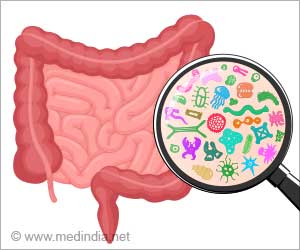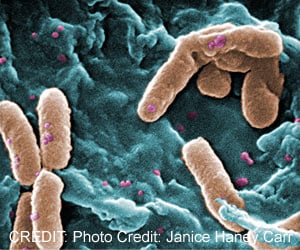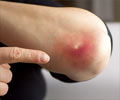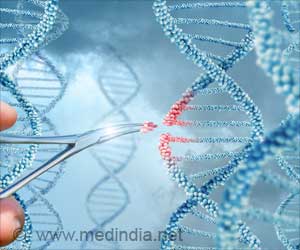Despite bacteria's resilience, experts explore CRISPR technology's potential to restore sensitivity to first-line antibiotics.

European Society of Clinical Microbiology and Infectious Diseases (ESCMID Global) 2024
Go to source). Clustered regularly interspaced short palindromic repeats (CRISPRs) and CRISPR-associated genes (cas) are widespread in the genome of many bacteria and are a defense mechanism against foreign invaders such as plasmids and viruses.
‘According to the Centers for Disease Control and Prevention (CDC), at least 2.8 million people in the United States acquire an antibiotic-resistant infection each year, leading to more than 35,000 deaths.
#antimicrobialresistance #crispr #antibioticsensitivity’





The CRISPR arrays are composed of a repeated array of short sequences, each originating from and exactly matching a nucleic acid sequence that once invaded the host.Accompanying CRISPR sequences, there are 4-10 CRISPR-associated genes (cas), which are highly conserved and encode the Cas proteins.
Cas proteins conduct adaptive immunity in prokaryotes (bacteria) based on immunological memories stored in the CRISPR array.
The CRISPR/Cas system integrates a small piece of foreign DNA from invaders such as plasmids and viruses into their direct repeat sequences and will recognize and degrade the same external DNA elements during future invasions.
As the CRISPR/Cas systems integrate DNA from invading pathogens in chronical order, genotyping can be used to trace the clonality and the origin of the isolates and define them as a population of strains that were subjected to the same environmental conditions including geographic location (region) and community/hospital settings and eventually further extended to track pathogenic bacteria around human society.
Advertisement
Due to the shortage of available effective antimicrobial agents in treating multidrug-resistant (MDR) infections, researchers started to search for alternative methods to fight MDR infections rather than going through the process of developing new antimicrobial agents which can go on for decades.
CRISPR's Promise Explored
While these systems can seem a target for manipulation/intervention, all bacteria are regulated by multiple pathways to ensure the bacteria retain control over the process. Therefore, there remain several major challenges in using this system as an antimicrobial agent.Most methods require delivery of the re-sensitized system by conjugation; the vector is carried by a non-virulent lab strain bacteria that is supposed to go and share the vector/plasmid through conjugation. The conjugation process is a natural process that the bacteria do which results in sharing plasmids among each other (even with other species).
The percentage of conjugated (successfully delivered) bacteria in the total bacterial population is critical to the re-sensitized efficiency. This process is governed by several complicated pathways. Bacteria also possess built-in anti-CRISPR systems, that can repair any damage caused by CRISPR-Cas systems.
Defense systems that the bacteria uses to protect itself from foreign DNA often co-localize within defense islands (genomic segments that contain genes with similar functions in protecting the host from invaders) in bacterial genomes; for example, acr (a gene that acts, with other similar variants, as a repressor of plasmid conjugative systems) often cluster with antagonists of other host defense functions (e.g., anti-restriction modification systems) and experts hypothesize that MGEs (mobile genetic elements) organize their counter defense strategies in ¡°anti-defense¡± islands.
Assistant Professor Bitar concludes: ¡°In summary, this method seems promising as an alternative way of fighting antimicrobial resistance. The method uses the concept of re-sensitizing the bacteria in order to make use of already available antibiotics ¨C in other words, removing their resistance and making them vulnerable again to first-line antibiotics. Nevertheless, bacterial pathways are always complicated, and such systems are always heavily regulated by multiple pathways. These regulated pathways must be studied in depth in order to avoid selective pressure favoring anti-CRISPR systems activation, hence the prevalence of resistance in a more aggressive manner.¡±
Reference:
- European Society of Clinical Microbiology and Infectious Diseases (ESCMID Global) 2024 - (https://www.eccmid.org/)
Source-Eurekalert















